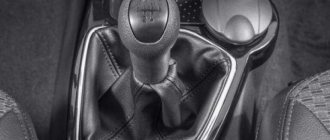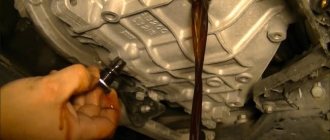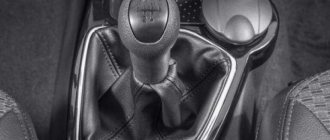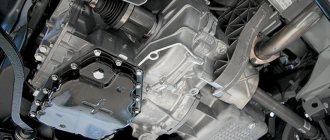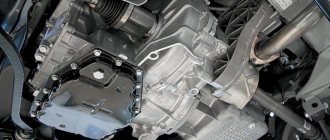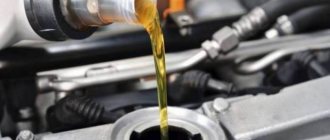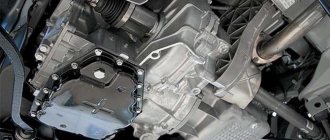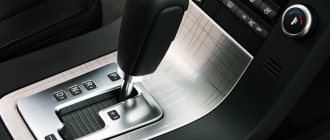How to do slipping on the spot?
Some people consider spinning to be pranks that young people do for fun. But it is not always the case. In drag racing, skidding heats up the tires. The slipping technique will vary depending on the type of transmission.
How to slip on a manual transmission?
In order to start slipping in a car with a manual transmission, press the brake and gas pedals at the same time. At the same time, do not press the brake pedal all the way. The engine picks up speed, and when to release the clutch is up to whoever is driving.
How to slip on an automatic transmission?
Without harm to the car, you can slip with an automatic transmission using neutral. Naturally, each gearbox has its own characteristics, but before you start drifting in place, it’s a good idea to read the instruction manual.
Recommendations
There are some rules regarding proper slippage.
- You can’t skid in place for a long time, because the gearbox needs rest. Skid periodically, so both the driver and the car will rest. There is no need to turn off the engine while resting.
- You cannot skid on a cold car. Hasty actions will lead to wear of significant parts of the automatic transmission, since slipping will begin without any lubrication of the mechanism.
- Before attempting to drive out of a snowdrift, turn on R mode, first pressing the brake pedal. We stand in this position for at least a minute. During this time, the required amount of lubricant will be pumped through the torque converter.
- When skidding, you should avoid too sharp traction with the road. The higher the load, the faster the clutches on the automatic transmission will fail.
Which cars are not suitable for towing?
- Low efficiency of the cooling system can provoke a critical condition due to increased heat generation in the torque converter. The radiator will become clogged with wear products. Such difficulties are typical for cars with high mileage. Let's include here all American cars produced back in the 80s and 90s.
- Older Japanese and European cars have air transmission cooling systems. This means that the automatic transmission is cooled while driving, and therefore slipping on them can only be to the detriment of the “health” of the car. True, there are practically no such cars in Russia anymore, since they are small cars that rarely hit our market.
If you follow these simple rules, you can skid without causing any harm to your iron horse. You don’t want to pay for expensive repairs or buy new tires because of a simple mistake? Always be careful when driving.
How to slip in place on rear wheel drive
Many young people are interested in the question of how to skid on the spot?
Such actions are popular primarily among young, novice street racers who have bought their first car. At the same time, you should know that the consequences of this will not keep you waiting. This applies to both manual and automatic gearboxes. How to slip in place in a car with a manual transmission? If we consider the action from a professional point of view, then this is necessary in order to warm up the car’s tires before a quick start. A sport that requires quick heating of the tires is called “drag racing.” In this case, the specifics of the actions depend on the type of gearbox. In this case, you must perform the following steps:
On an automatic gearbox the situation is somewhat more complicated. This will require a slippery surface: snow, ice, sand. The procedure is to perform similar manipulations. The only difference is that it is not advisable to make long jerks. The engine of the car should cool down a little in seconds. It is not recommended to stop the engine at this moment; it should run at idle speed. In addition, the car must be warmed up to operating temperature. If this is not done, oil will not be supplied to the automatic transmission, and the result will be its subsequent replacement.
How to slip?
Some people consider spinning to be pranks that young people do for fun. But it is not always the case. In drag racing, skidding heats up the tires. The slipping technique will vary depending on the type of transmission.
How to slip on mechanics
In order to start slipping in a car with a manual transmission, press the brake and gas pedals at the same time. At the same time, do not press the brake pedal all the way. The engine picks up speed, and when to release the clutch is up to whoever is driving.
How to slip on automatic
Without harm to the car, you can slip with an automatic transmission using neutral. Naturally, each gearbox has its own characteristics, but before you start drifting in place, it’s a good idea to read the instruction manual.
Recommendations
There are some rules regarding proper slippage.
- You can’t skid in place for a long time, because the gearbox needs rest. Skid periodically, so both the driver and the car will rest. There is no need to turn off the engine while resting.
- You cannot skid on a cold car. Hasty actions will lead to wear of significant parts of the automatic transmission, since slipping will begin without any lubrication of the mechanism.
- Before attempting to drive out of a snowdrift, turn on R mode, first pressing the brake pedal. We stand in this position for at least a minute. During this time, the required amount of lubricant will be pumped through the torque converter.
- When skidding, you should avoid too sharp traction with the road. The higher the load, the faster the clutches on the automatic transmission will fail.
How to skid on the spot? Using the example of mechanics and automatic transmission
Download PDF
Having a manual or automatic transmission installed, how to slip in place? Will this cause harm to units and components? We will answer these questions and more in this section. It is no secret that this nonsense affects mainly young and impulsive drivers (street racers) who do not know a lot about technology and the cost of breakdowns. As they say, the main thing is to put your slippers on the floor
. In this way, guys try to stand out from the crowd in front of friends and colleagues, as well as attract the attention of girls. But what will follow such antics? In what condition will the car return home then? It’s good if it’s yours, not your father’s. Do you understand what I'm talking about. But there is another side to the coin...
What to do if you are stuck on front-wheel drive?
Let's consider several possible situations:
- If the left wheels are on the asphalt (or any other hard surface), and the right wheels are on the side of the road (or in a snow and mud “mess”), then you do not need to reduce or increase the speed and under no circumstances should you turn off the gear. We smoothly bring the car onto a hard surface without changing the pressure on the gas pedal.
- If, while the car is moving, all four wheels are on the side of the road (snowy road, snow and mud “porridge”), then you need to turn on a lower speed and increase the pressure on the accelerator pedal (this way, with the front wheels driving, it is easier for you to stabilize the movement). We smoothly drive the car onto a hard surface.
- If you are stopped in a snowy area and cannot start moving due to wheel slip. Remember: when you press the gas pedal, a front-wheel drive car “lifts” the front end, thereby redistributing the weight of the entire car to the rear, which is worth taking advantage of in this situation. We engage first gear, and by briefly pressing the gas pedal we “rock” the car back and forth (successive presses: gas pedal - clutch pedal - gas pedal - clutch pedal and so on), without changing the position of the steering column. When the wheels begin to cling to the surface, we gradually increase the speed.
- If after the previous steps you were unable to leave, then you need to manually clean the coating near the front wheels (it is recommended to have a small shovel with a short handle in the trunk in the winter). It is necessary to clean a distance of about 50 centimeters from each wheel. If you do less, there is a high probability that you will pass the cleared area and skid again, since the inertia of movement will be minimal.
- What to do if you skid on an icy section of the road while climbing? In this case, you need, without turning off the gear, slow down, switch to a lower gear and gradually increase the speed (to approximately 1400-1500 rpm). If you sharply increase the speed, then slippage is inevitable.
Rear-wheel drive vehicles
II. Engage first gear, then fully depress the clutch and gradually begin to increase engine speed. With a quick but smooth movement, begin to release the clutch pedal, while still pressing the gas.
Attention. To prevent the speed from going into the red zone, work with the gas pedal very carefully; you do not need to press it all the way to the floor. The ideal execution technique is shown in the following video. (1.00 minute video). Play with the gas pedal, alternately pressing it harder or weaker, while constantly maintaining high but safe engine speeds.
The average range of these revolutions should be between 3500 and 4500 rpm. On modern cars this range is closest to peak torque.
Once the clutch is fully released, place your left foot on the brake pedal. In order to press the brake pedal with the required force with your left foot, some practice is required. It’s very difficult to do this the first time (and sometimes the tenth).
The braking force must be more than sufficient so that the rear wheels of the car continue to rotate freely, while the car itself remains in place or continues to move very slowly forward.
Attention! !! Attempts to do a burnout for the first time will naturally be initially unsuccessful over and over again, until you learn to feel the smallest nuances of the car. In this case, there is a possibility of overheating of the clutch itself, up to its failure. So try to monitor any unusual and foreign odors that appear in the car’s interior, as well as the behavior of the car itself when you turn on the gearbox and depress the clutch, precisely at the moment the pads meet the clutch disc.
Motorbike
On a motorcycle it is enough to install side protection, because... During training, you can turn the bike on its side. A machine with easy clutch release will come in handy, because... You will have to constantly depress the clutch. With a standard machine, your fingers will get tired much faster. The pressure in the rear wheel does not matter much. The standard one is quite suitable for training. It is advisable to adjust the brake lever so that it is as close as possible to the steering wheel. This will reduce the stress on your fingers and allow you to feel the brakes better.
Burnout standing still
This is the easiest way! You can start with the front wheel resting against the wall.
- Do not release the gas while releasing the clutch, i.e. keep stable. You instinctively want to turn off the gas, but you can’t do this.
- Press as hard as possible on the fork when releasing the clutch, i.e. stand up on your hands.
- Completely block the front wheel. Do not slow down, but press the front brake firmly and do not release. At first, it will not be easy to hold the brake depressed and twist the gas.
How to do a burnout on an automatic machine
Articles Loading...
Good health. I don’t know why today I received such questions as “How to grind on site?”, “How to burn rubber?”, “How to do Burnout?”
etc. I don’t understand why they started asking me such questions, but I feel it won’t end with 4 guys and that’s why I decided to quickly answer everyone at once.
You can sand everything, even Zil 124 (Yes, it happened, I was about 13 years old and I was acting up, calm down.)
. Do you have a weak car? Do you feel sorry for the tires? It's simple. In winter on snow it is easy and without much harm to the tires, but there will be no smoke. In summer you can create a lot, a lot of smoke and the secret is simple.
Take engine oil, pour it onto the asphalt, add water so that there is a puddle and just stand on the drive wheels and grind it, there will be a lot of smoke from the oil, but don’t forget that then you need to wash the tires if you drive on them, so that you will The road didn't get carried away and didn't get into an accident.
Try to use bald tires on light rims for the drive wheels; you can even buy a used one and polish it.
Next and the most important thing is how to do it. The easiest way is on a front-wheel drive car with manual transmission.
Stand on snow, a puddle, or the consistency mentioned above, lift the clutch and as the gas begins to move off, the handbrake and it will begin to grind. Some people simply drive their drive wheels up to the curb and grind against it.
Automatic front wheel drive
The same thing, you just need to set the L3 mode and turn off the traction control.
With rear wheel drive on mechanics
it’s more difficult, here you need to have the wheels spinning and you press the brakes, and since the rear brakes will grab, it’s difficult to do this on a weak car, the same check, you need to make a system that will block the front wheels, but not the rear ones, also without the system will cause the brakes to overheat, and the old ones also have drum brakes, which is generally crap.
You can read about this in other articles (Not mine, I won’t describe this.)
.
For powerful cars this is overheating of the brakes, but it is still real. You need to depress the clutch with your left, press the brake with your right heel, and press the gas with your toe. By the way, in the new Dodge Challenger Hellcat
there is a button that blocks the front brakes and you only need to press the gas. The system is not difficult to create.
Automatic, rear wheel drive
, this is the most difficult thing, unless of course you have a system like the
Dodge Challenger Hellcat
. There is a very high probability that your box will simply collapse, so I won’t advise you and you need to run.
There is also special rubber that has the color of smoke, but it is expensive.
And most importantly, there are advisers who tell you to unscrew the brake hoses, but they apparently don’t know that most cars have a parallel system, and when you unscrew one hose, it is responsible for the front left and rear right brakes, and the other is for the front right and rear left brake. So let’s say it’s X-shaped, so that if 1 hose breaks, for example, then you will have 2 wheels brake on opposite sides, and not pull you to the side.
In general, I advise you not to burn rubber randomly (Unless it’s garbage, which you don’t mind)
, be careful, follow traffic rules and do it wisely so that no one gets hurt. I hope there will be no more questions.
To burn rubber as intensely as in the video, the car must have enormous power to turn the wheels at high speeds in second and third gear.
Execution technique: Automatic: Press the brake with your left foot and give the gas a good push with your right (here you need to practice with the force of pressing the brake and the speed of pressing the gas) after the wheels fall into the axle box, it is better to release the brake a little. There are several methods in mechanics: 1. We stand still, put our right foot on the gas, and with our left foot we sharply release the clutch, transferring it to the brake until the car starts moving.
If the wheels slip into the axle box, dose the gas and release the brake to a minimum so that the car does not move. 2. Stand still, press the gas pedal with your right foot, reduce the pressure on the clutch pedal with your left toe while simultaneously pressing the brake with your heel. (A more complex method, but you can perform Burnout more smoothly) On a car with ABS turned on, it is problematic to perform Burnout since ABS releases the brakes As a result, the car moves.
If there is a button to turn off ABS, turn it off.
Please note that Burnout puts stress on the brake discs and pads of the rotating wheels, clutch, automatic transmission, engine (since the car does not move but produces a lot of power, the cooling system may not be able to cope with prolonged burning of rubber) Be careful and take care of your car.
Burnout in a straight line
The main difference from burnout on the spot is that burnout must be turned on while moving. In fact, it's easier, because... You can additionally load the fork by braking the front wheel. Therefore, while driving, the rear wheel can be torn off at low speeds (4-6 thousand).
- Shift your body weight forward as much as possible, standing on your toes if necessary. At first it will seem like you'll fly over the steering wheel. If you don't stop abruptly, you won't fly over)
- Always cool the front brake. After a few tries the front brakes become very hard.
- Don't be afraid to ease up on the front brake to go faster. Even if you completely release the front brake, nothing bad will happen: the motorcycle will begin to quickly accelerate in a straight line and the axle box will gradually become engaged.
Burnout eight
Burnout figure eight consists of circles, so you need to learn to circle in both directions. It makes sense to learn circles if you consistently achieve controlled movement in a straight line.
- Before entering a circle, it is better to reduce the speed with the front brake. When the front wheel rotates slowly, the skid occurs with less inclination, making it easier to get out of the circle, because You won’t have to dampen the tilt with strong pressure on the steering wheel.
- It is advisable to run laps at high speeds. This is necessary so that there is a reserve of revolutions when they need to be reduced. If the rpm drops to idle, the motorcycle will stall.
- Concentrate more on the handlebars than on the footpegs. You need to tilt the motorcycle by transferring your body weight to your hand, and not by pressing your foot on the footrest.
- Before leaving the circle, you need to loosen the front brake so that the motorcycle levels out and goes in a straight line. It is advisable to reduce the speed so that the output is softer.
If you have any comments or additions, write to us and we will update the article!
We made a compilation of the most interesting moments that we managed to capture. Everyone was included in the video: from scooter riders to world champion Marcin Glowatski!
The experience of pro-riders and amateurs has shown that often screwed-in construction screws with a flat head and protruding 1-1.5 cm work well for stunt bikes. The reliability of fixing the studs depends on the type of cord and tread thickness. It is not advisable to use worn rubber with this studding method.
For a standard set of tires (120 front and 180 rear) it took us about 10,000 screws. Screwing in self-tapping screws is tedious, but you can master it in a few days at a leisurely pace. The rubber gained a lot of weight and became stiffer.
The wheel rims have a recess for the valve on the inside. To prevent the camera nipple from rubbing against the edges, it is advisable to place a gasket or rubber washer, which can be made from an old valve.
Burnout technique, what you need to know about wheel slip on the spot: Video
WARNING! DO NOT USE THE BURNOUT TECHNIQUE IN PLACES OF LARGE CLOCKS OF PEOPLE AND ON PUBLIC ROADS!
Burnout, an effective technique for warming up tires or a spectacular way to show off in front of others. In any case, the ability to do a burnout will help you get a better feel for a car with a manual transmission and ruin a couple of tires.
An expert in auto mechanics and physics, Jason Fanske from the YouTube channel “Engineering Explained” again held a cultural education for his viewers. In a new form, Jason explained in detail the basics of the burnout technique, citing as an example his rear-wheel drive Honda S2000 with a manual transmission.
First, the video explains in what cases this technique is used and why it is needed.
-The coefficient of adhesion of cold tires to the road surface may be low and if necessary, it needs to be increased. If you warm up your tires, their temperature will increase, they will become softer and their grip will increase. Where is it used? Mainly in drag racing.
It is further mentioned (1.26 min video) that the process on an automatic transmission is quite simple. Press the brake, then press the gas. As soon as the wheels to which the drive is driven begin to rotate, weakening and increasing the pressure on the brake pedal, it is necessary to regulate the rotation of the wheels and prevent the car from moving.
Inscription at the top: Make sure the traction control is turned off!
On cars with a manual transmission, the narrator continues, everything is somewhat more complicated (1.47 min video). To do this you need:
- Depress the clutch
- Engage first gear
- Lightly press the accelerator pedal, release the clutch and immediately press the brake pedal with your left foot
As soon as you manage not to stall at this moment or to avoid slipping forward (in particular, due to the likelihood of uncontrolled acceleration of the car, burnout is so dangerous both for those around you and for the driver himself), proceed to working with the brake and gas pedals, also , as with an automatic transmission.
In addition to the equipment itself, the video mentions that it is extremely important to know at what speed the wheels of your car begin to slip on the asphalt. In the S2000, the author says, slippage begins at approximately 5,000 rpm. If you overclock the engine, there is a danger of burning the clutch instead of the tires; if the engine speed is not enough, the car will not have enough torque to overcome the grip of the tires on the road surface.
And finally, at 2.48 minutes of the video it shows how hot the tires are during a burnout. Note that the first few attempts were unsuccessful, but even so, the tire temperature increased by 4 degrees, from 15 to 19 degrees Celsius. Moreover, the inner side of the tire heated up the most, up to 20 degrees, due to the reverse camber of the wheels.
At the end of the action, the tires were heated to 160 degrees Celsius!
This is such an interesting educational program in the world of sports and automotive extremes.
Information publication: Traffic police news, accidents, traffic fines, traffic police, Online traffic rules exam. Technical inspection
"Crank" on "automatic"
It's not that simple here
as it seems to some. It is possible to slip only if the road is slippery: ice, snow, or, in extreme cases, sand on the beach. You can't do this on asphalt. They say that some people manage to make a crank in the “neutral” mode on an automatic transmission, but one hardly believes in such fables.
Practical recommendations:
- Long jerks are strictly prohibited. Give the engine a rest;
- During a “smoke break,” do not turn off the engine;
Let's simulate the situation:
stuck in a snowdrift and need to get out with an automatic transmission. To do this, engage the “R” gear, before doing this we squeeze the foot brake.
In this mode, we wait about 3 minutes until the oil is pumped up by the torque converter and gradually begin to release the brake, increasing the speed. High speeds will quickly damage the automatic transmission clutches. Minimal cooling may cause the liquid to boil.
Experienced drivers recommend using the foot brake as a clutch pedal in a manual transmission.
. Thus, you can try to get out of the skid. It is strictly forbidden to “jump” from one gear to another. Older cars with automatic transmissions have an air cooling system for the automatic transmission - a technology from the 80-90s. Today this technology is no longer used.
In a word, slipping is allowed, but within moderate limits.
Tips for Drag Racing fans:
- For this type of race, a rear-wheel drive car would be optimal;
- Some types of tires are specifically designed for anti-skid, so choose the appropriate type. Otherwise, be prepared to smell a burnt clutch disc. Do not confuse this with the smell of burnt rubber;
- When starting, keep the wheels level, as the rear may skid a little.
Be that as it may, the idea of slipping for no reason is a rather dangerous thing
, since, without experience, a novice driver can do things that will end in a major overhaul or partial replacement of the power unit. And this already smacks of good spending.
Therefore, if you really want to learn the art of drag racing, first take training courses at any driving school and only after that feel free to get behind the wheel of your car. Actually, they gave a full answer to the question: how to skid on the spot. Always make an informed decision.
